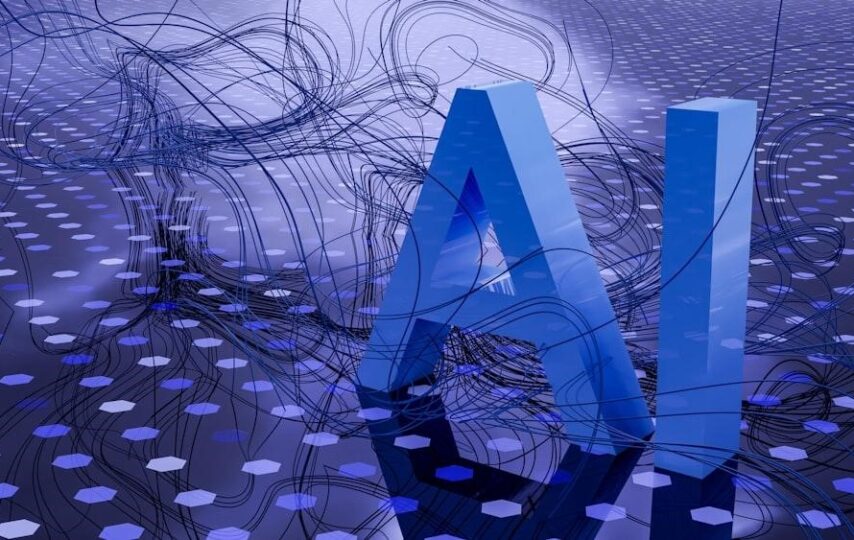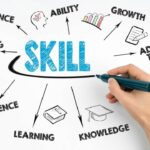At the core of the cutting edge working environment lies the Human-artificial intelligence Joint effort, an organization that weds human imagination with man-made reasoning’s insightful power. Associations are perceiving the worth of this consolidation, where artificial intelligence doesn’t supplant yet rather supplements human mastery.
For example, in medical care, artificial intelligence aids clinical imaging, upgrading dynamic cycles and working on understanding results.
The elements of this cooperation fluctuate contingent upon the degrees of human ability and the idea of the job needing to be done. It’s fundamental to comprehend that powerful coordinated effort goes past simple undertaking assignment.
It includes a profound learning model that improves the cooperative climate, in this manner raising both execution and worth creation.
Yet, how does this effect efficiency and productivity across ventures?
All things considered, the joining of computer based intelligence in different areas like medical services, transportation, and energy has been vital for accomplishing prevalent results and planning better computer based intelligence calculations.
As we investigate the particulars of mechanizing routine errands, one could ponder: Which jobs will people play in a man-made intelligence ruled scene?
How artificial intelligence Expands Human Capacities
At the point when we discuss work, artificial intelligence’s part in computerizing routine errands isn’t simply an issue of productivity; it’s an essential expansion to human imagination. By taking over tedious and tedious undertakings, computer based intelligence frameworks permit people to zero in on regions that require a human touch — critical thinking, vital reasoning, and development. Think about the effect on efficiency: when simulated intelligence handles the normalized subtasks, human experts are freed to participate in more significant level work, frequently prompting forward leaps in their fields.
But what does this shift mean for AI in the workforce? A change reallocates mastery, reshapes learning and teams up in associations. Artificial intelligence doesn’t supplant people; it expands our capacities in manners that are both nuanced and significant.
For example, in errands like vein naming, man-made intelligence help has been displayed to fundamentally help navigation, particularly when calculations are tuned to human qualities and shortcomings.
How might we guarantee that this advantageous interaction among people and artificial intelligence arrives at its maximum capacity?
It requires an intentional way to deal with incorporating simulated intelligence into the working environment, one that adjusts the qualities of both human and computerized reasoning. The eventual fate of work relies upon our capacity to dominate this equilibrium and establish a climate where computer based intelligence upholds human resourcefulness instead of rivals it.
The genuine force of simulated intelligence in the working environment lies not in supplanting human jobs but rather in upgrading human abilities to exceptional levels.
New Abilities And Jobs in The simulated intelligence Time
In the developing scene of the working environment, the capacity to designate errands to man-made intelligence is turning into a basic expertise. Research shows that artificial intelligence apparatuses can upgrade task execution and fulfillment by supplementing human qualities and shortcomings.
For example, in clinical imaging, computer based intelligence’s observational guidance reinforces human direction, prompting more successful results.
In any case, how might one dominate this craft of assignment to man-made intelligence?
The critical lies in grasping the exceptional capacities of artificial intelligence and adjusting them to human aptitude. This collaboration further develops productivity as well as engages representatives, as studies propose it increments self-adequacy levels.
Consider the accompanying table, which frames the effect of man-made intelligence help on task execution in vein marking:
| Task Aspect | Without AI | With AI |
| Accuracy | Moderate | High |
| Speed | Average | Fast |
| Satisfaction | Variable | Improved |
The mix of artificial intelligence in task the executives isn’t just about proficiency; it’s tied in with establishing an amicable workplace where human resourcefulness is enhanced by man-made reasoning.
As we dig into the subtleties of human-man-made intelligence coordinated effort, one should contemplate: Would we say we are ready to adjust to these new jobs where computer based intelligence takes on administrative obligations?
The fate of work isn’t about human versus computer based intelligence, but instead, how well they can cooperate to accomplish shared objectives.
Planning For A Future Molded By Human-man-made intelligence Joint effort
As we investigate the Fate of Work and artificial intelligence’s job inside society, it’s essential to perceive the extraordinary capability of human-computer based intelligence coordinated effort in tending to cultural difficulties. Artificial intelligence associations are not just about proficiency; they’re tied in with upgrading human government assistance and handling complex worldwide issues.
For example, computer based intelligence’s scientific arrangement, when joined with human inventiveness, can prompt creative answers for environmental change, medical services, and schooling. The collaboration between human instinct and simulated intelligence’s information handling can yield methodologies that are both successful and compassionate, guaranteeing that innovative advancement helps all layers of society.
In any case, how would we guarantee that the advantages of man-made intelligence in the public eye are impartially circulated?
Think about the accompanying focuses:
- Guaranteeing comprehensive development by supporting instruction and preparing programs.
- Helping laborers impacted by computer based intelligence driven changes with progress methodologies.
- Tending to moral ramifications of computer based intelligence, like security and reasonableness.
The table below illustrates the potential impact of AI on various societal sectors:
| Sector | Potential Impact |
| Healthcare | Improved diagnostics and personalized treatment plans |
| Education | Bridging educational gaps and fostering innovation |
| Environment | Data-driven strategies for sustainability |
By encouraging a culture of coordinated effort and nonstop learning, we can bridle man-made intelligence’s capacities to change enterprises as well as to engage networks and drive social advancement.
Anyway, as we attempt to wrap this up, we should consider this inquiry: Would we say we are prepared to embrace the progressions and potential open doors that computer based intelligence brings to the very front of our general public?
Conclusion:
Embracing the Cooperative energy of Human-artificial intelligence Joint effort
In this continually impacting universe of work and society, the combination of human resourcefulness with man-made intelligence’s scientific power brings another time of coordinated effort. As we stand on the edge of this groundbreaking period, we shouldn’t stress, as simulated intelligence will not supplant our positions. All things considered, it will make us far better at what we do.
By cultivating a consolidation of these, we are as of now enabling the possibility to address complex difficulties, drive development, and enhance our aggregate prosperity. The future won’t just permit us to adjust to computer based intelligence yet additionally lead with a dream that blends moral contemplations, consistent learning, and the indispensable worth of human commitment.
Together, we can explore the subtleties of this organization, guaranteeing that as we advance mechanically, we likewise progress in making a more comprehensive, tough, and flourishing society.








